Constitution Method for Broadband Acoustic Metamaterials Based on the Design Theory of a One-Dimensional Distributed Transmission-Line Model
Abstract
1. Introduction
2. Methods
2.1. Design Theory Based on a 1D Distributed Transmission-Line Model
2.2. Proposal Structures and Acoustic Broadband Metasurface Design
2.3. Flat Acoustic Lens Design
3. Results and Discussion
3.1. Acoustic Metasurface
3.2. Acoustic Flat Lens
4. Conclusions
Author Contributions
Funding
Data Availability Statement
Conflicts of Interest
References
- Mei, J.; Wu, Y. Controllable transmission and total reflection through an impedance-matched acoustic metafurface. New J. Phys. 2014, 16, 123007. [Google Scholar] [CrossRef]
- Xie, Y.; Wang, W.; Chen, H.; Konneker, A.; Popa, B.-I.; Cummer, S.A. Wavefront modulation and subwavelength diffractive acoustics with an acoustic metasurface. Nat. Commun. 2014, 5, 5553. [Google Scholar] [CrossRef] [PubMed]
- Welter, J.T.; Sathish, S.; Christensen, D.E.; Brodrick, P.G.; Heebl, J.D.; Cherry, M.R. Focusing of longitudinal ultrasonic waves in air with an aperiodic flat lens. J. Acoust. Soc. Am. 2011, 130, 2789. [Google Scholar] [CrossRef] [PubMed]
- Jahdali, R.A.; Wu, Y. High transmission acoustic focusing by impedance-matched acoustic meta-surfaces. Appl. Phys. Lett. 2016, 108, 031902. [Google Scholar] [CrossRef]
- Zhao, S.-D.; Chen, A.-L.; Wang, W.-S.; Zhang, C. Continuously Tunable Acoustic Metasurface for Transmitted Wavefront Modulation. Phys. Rev. Appl. 2018, 10, 5. [Google Scholar] [CrossRef]
- Chen, J.; Xiao, J.; Lisevych, D.; Shakouri, A.; Fan, Z. Deep-subwavelength control of acoustic waves in an ultra-compact metasurface lens. Nat. Comm. 2018, 9, 4920. [Google Scholar] [CrossRef] [PubMed]
- Zhao, Z.; Li, B.; Chen, Z.N.; Qiu, C.-W. Redirection of sound waves using acoustic metasurface. Appl. Phys. Lett. 2013, 103, 151604. [Google Scholar] [CrossRef]
- Díaz-Rubio, A.; Tretyakov, S.A. Acoustic metasurfaces for scattering-free anomalous reflection and refraction. Phys. Rev. B 2017, 96, 125409. [Google Scholar] [CrossRef]
- Shen, C.; Díaz-Rubio, A.; Li, J.; Cummer, S.A. A surface impedance-based three-channel acoustic metasurface retroreflector. Appl. Phys. Lett. 2018, 112, 183503. [Google Scholar] [CrossRef]
- Ma, G.; Yang, M.; Xiao, S.; Yang, Z.; Sheng, P. Acoustic metasurface with hybrid resonances. Nat. Mat. 2014, 13, 873–878. [Google Scholar] [CrossRef] [PubMed]
- Li, Y.; Assouar, B.M. Acoustic metasurface-based perfect absorber with deep subwavelength thickness. Appl. Phys. Lett. 2016, 108, 063502. [Google Scholar] [CrossRef]
- Long, H.; Liu, C.; Shao, C.; Cheng, Y.; Chen, K.; Qiu, X.; Liu, X. Subwavelength broadband sound absorber based on a composite metasurface. Sci. Rep. 2020, 10, 13823. [Google Scholar] [CrossRef] [PubMed]
- Nagayama, T. Design Method of Broadband Acoustic Metasurfaces Based on the Transmission-line Theory. In Proceedings of the 2022 Photonics and Electromagnetics Research Symposium (PIERS), Hangzhou, China, 25–29 April 2022; pp. 432–438. [Google Scholar]
- Nagayama, T. Design Method for Broadband Metasurfaces by Using a Simple Non-Resonant One-Dimensional Transmission-Line Model. In Proceedings of the 2021 2nd International Conference for Emerging Technology (INCET), Belgaum, India, 21–23 May 2021; pp. 1–4. [Google Scholar]
- Nagayama, T.; Fukushima, S.; Watanabe, T. Design Method of Broadband Flat Metasurface Lenses by Using a One-Dimensional Distributed Transmission-Line Model. In Proceedings of the 2021 IEEE International Symposium on Antennas and Propagation and USNC-URSI Radio Science Meeting (APS/URSI), Marina Bay Sands, Singapore, 4–10 December 2021; pp. 403–404. [Google Scholar]
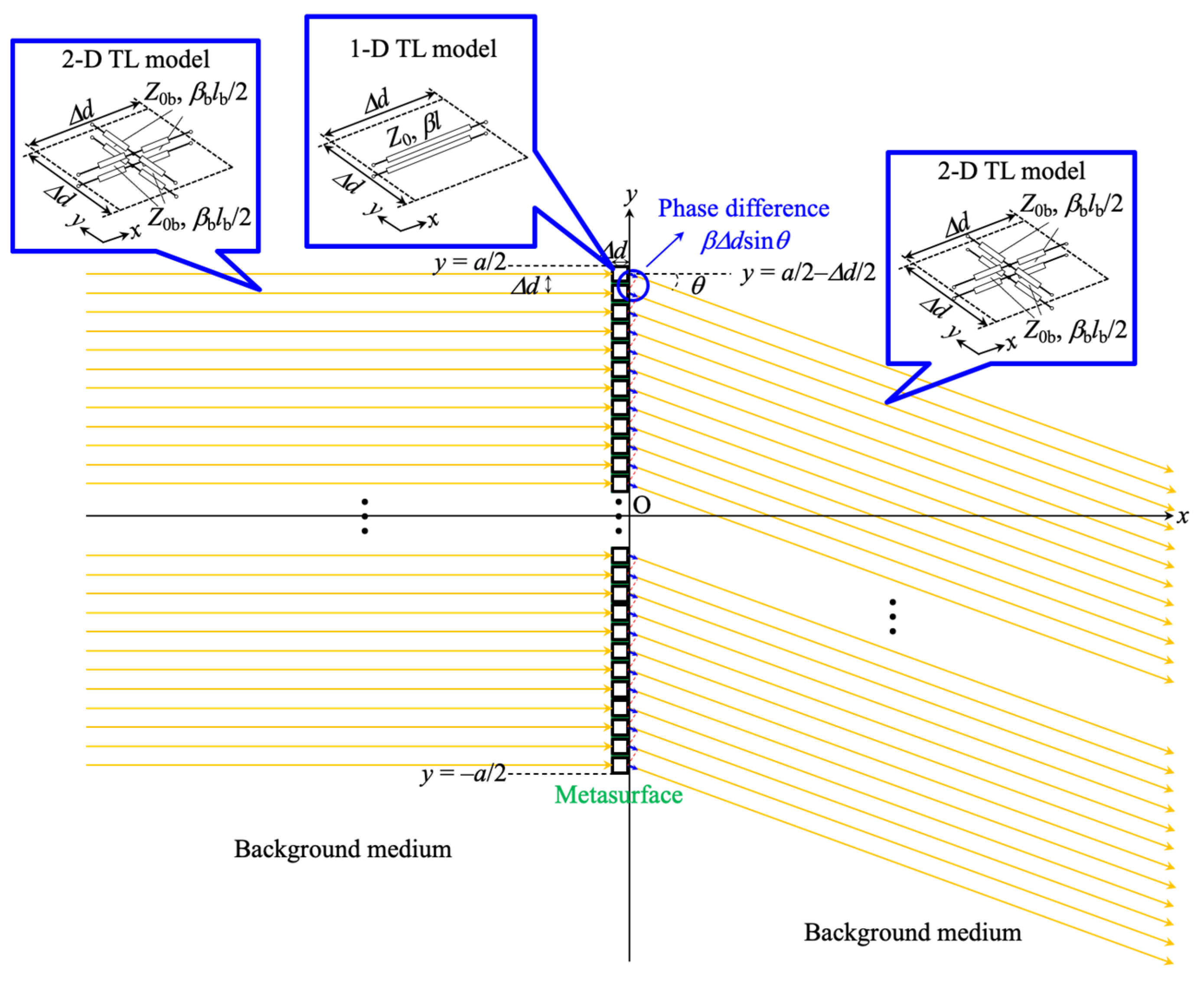
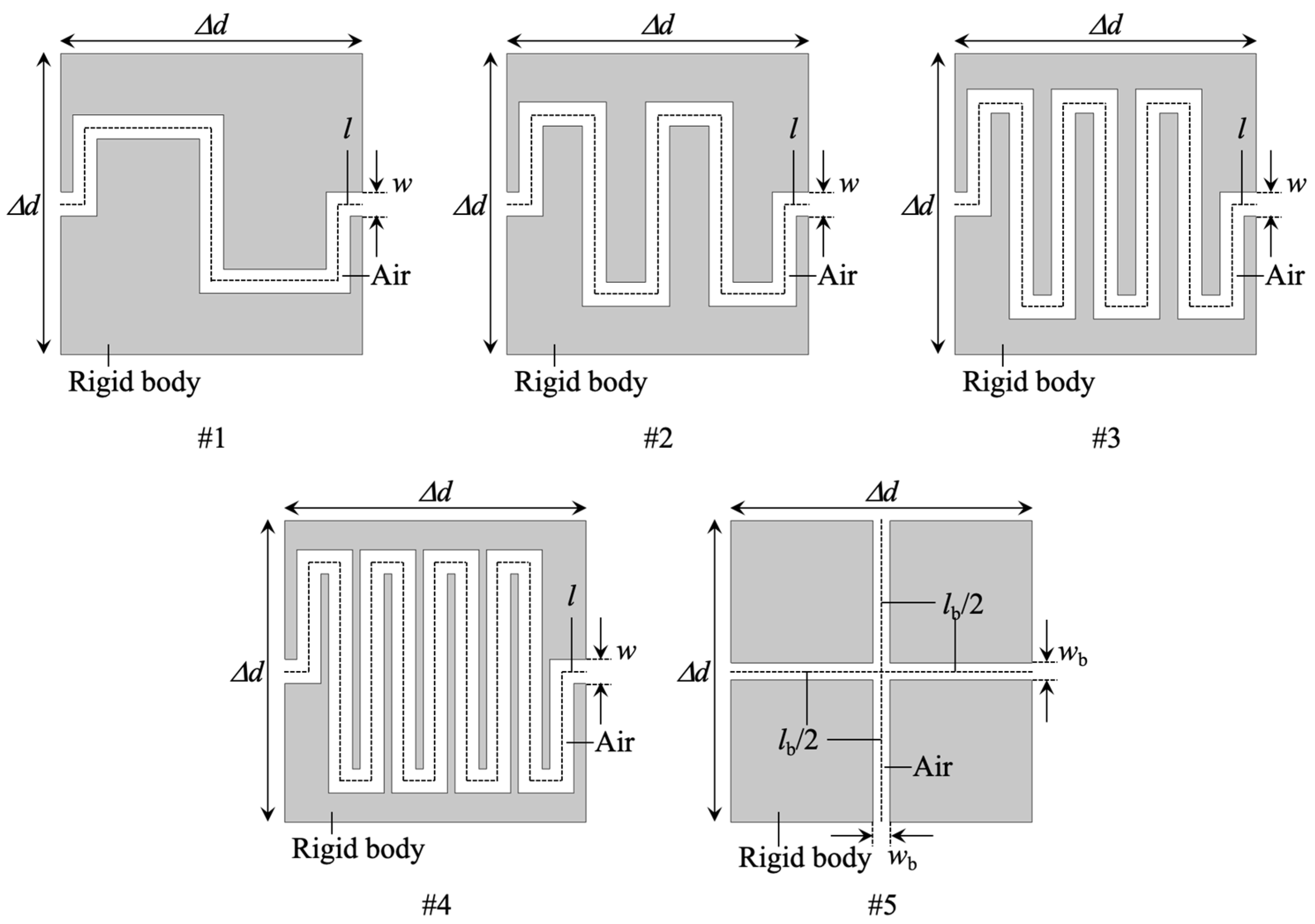

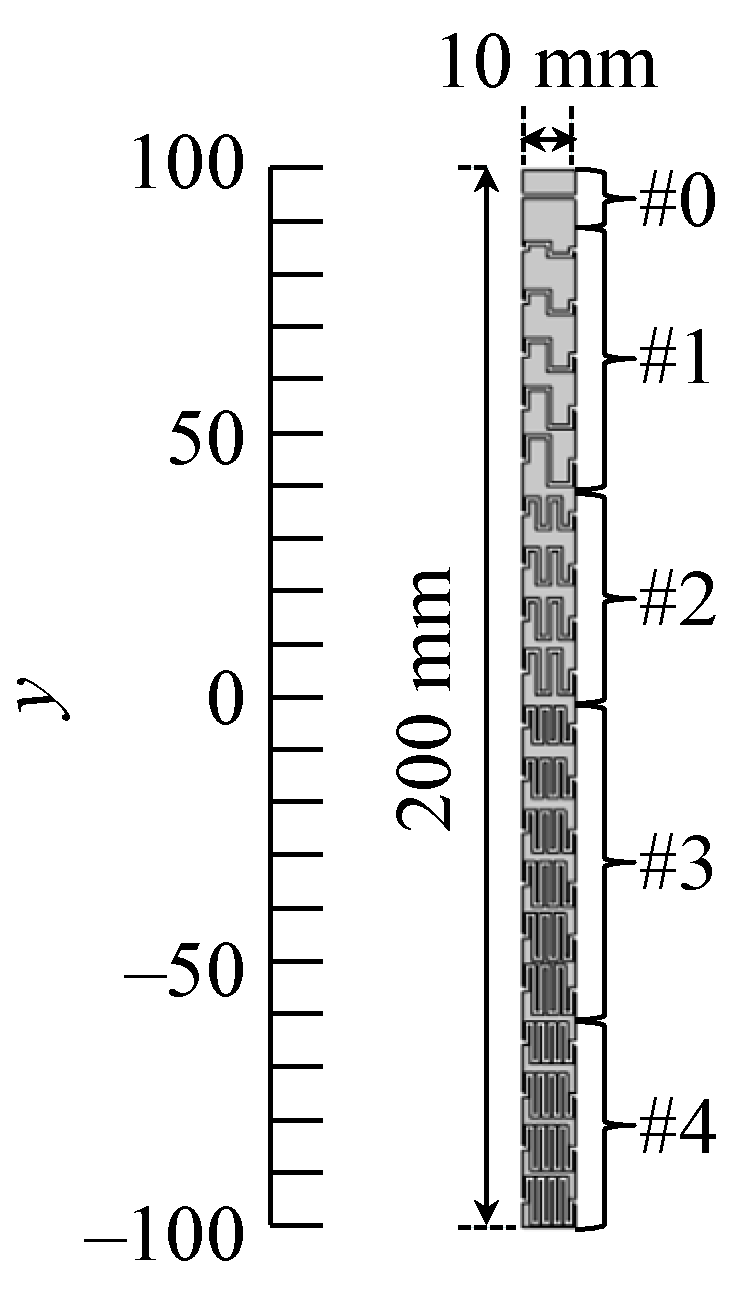
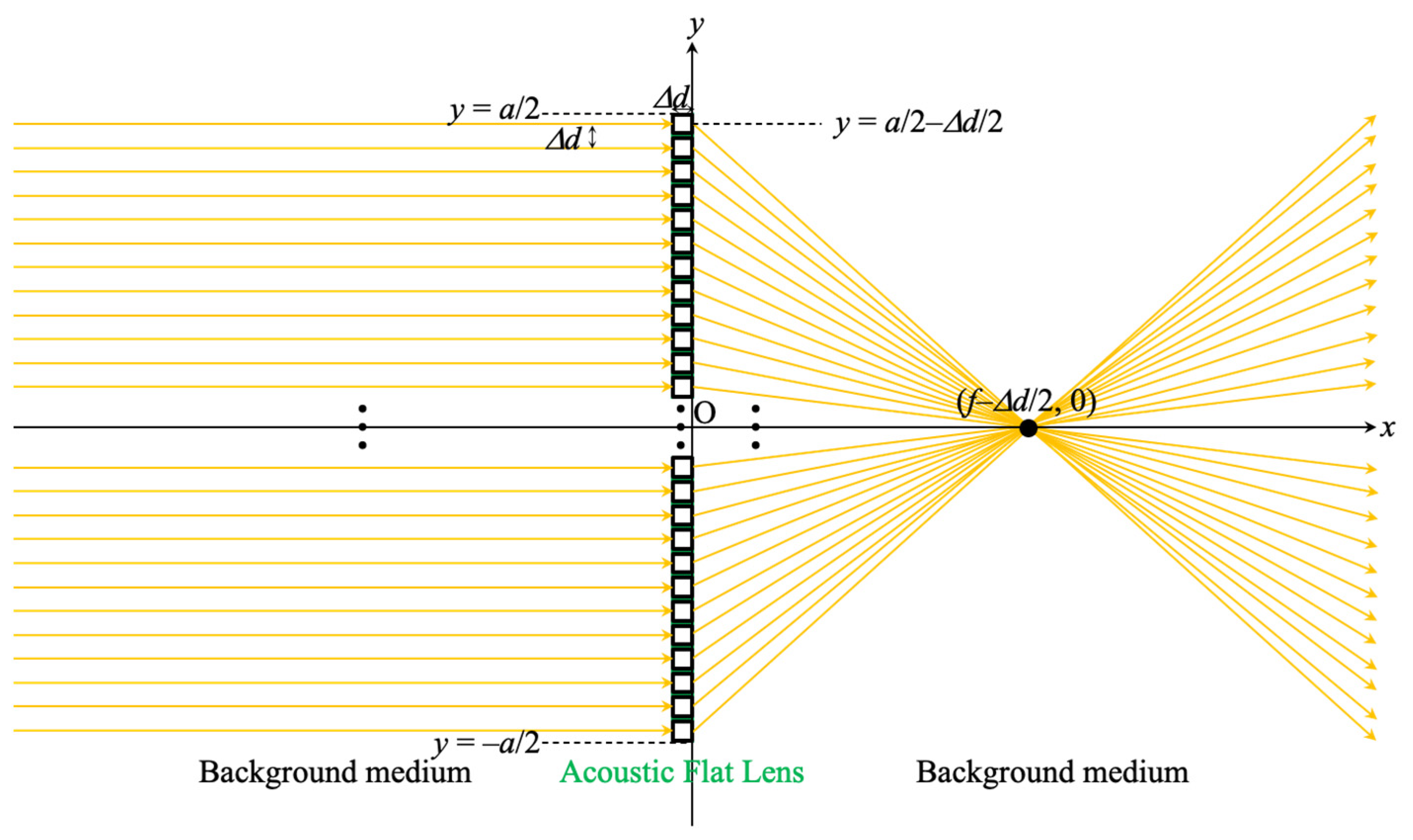
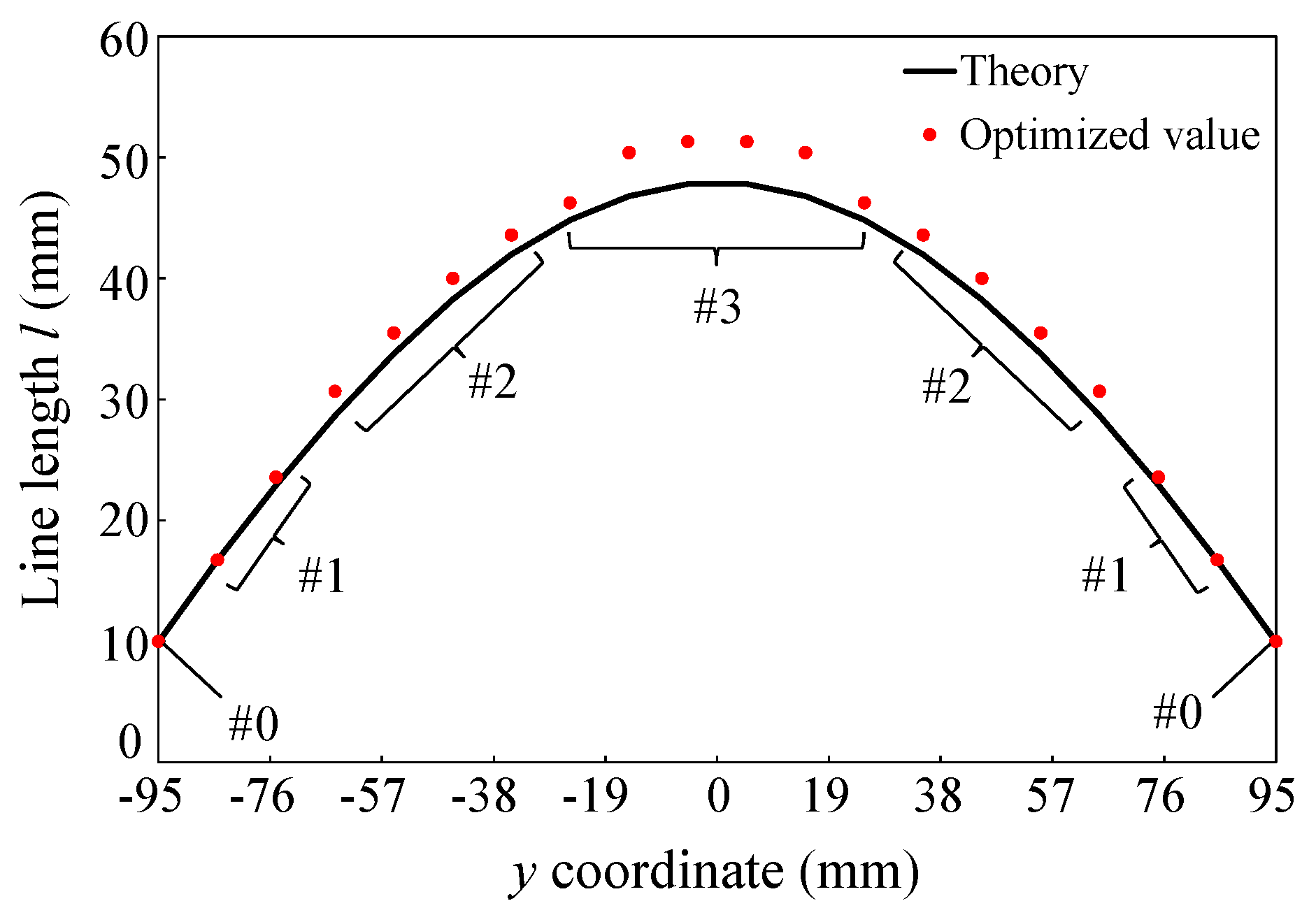
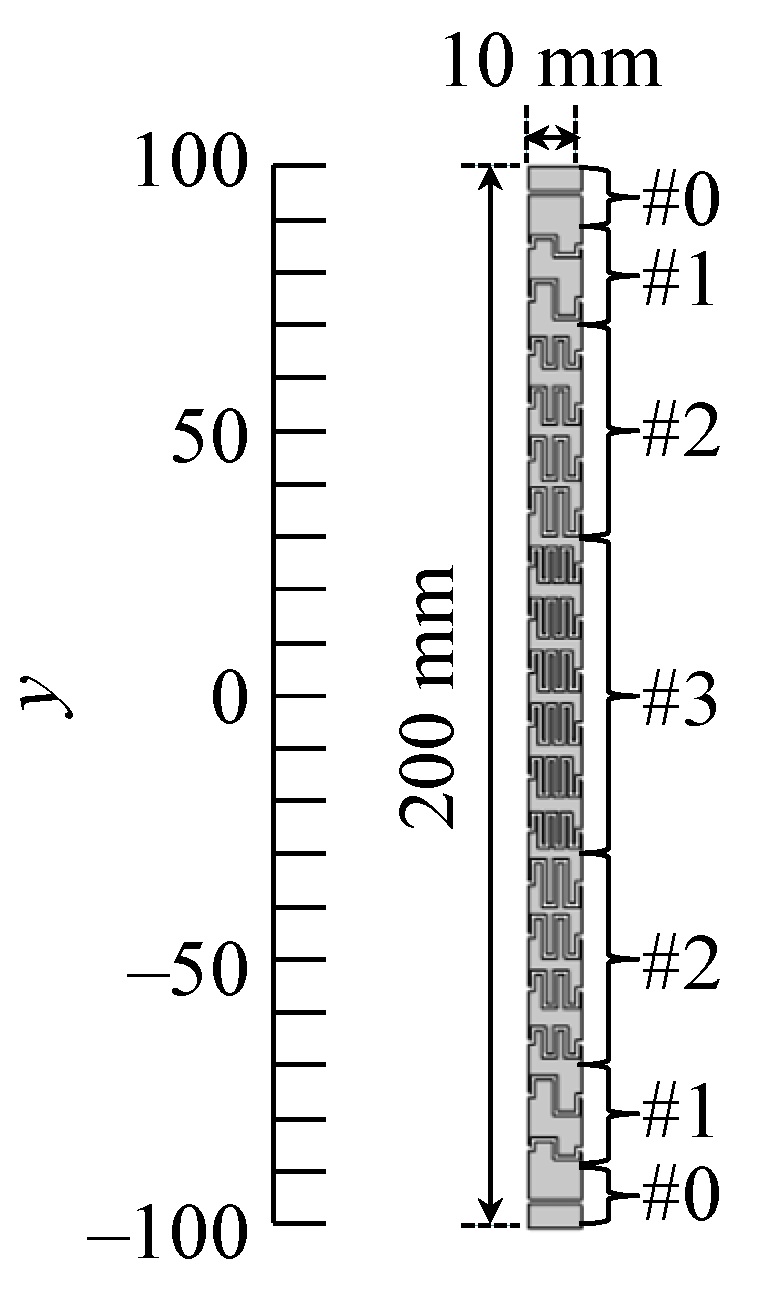



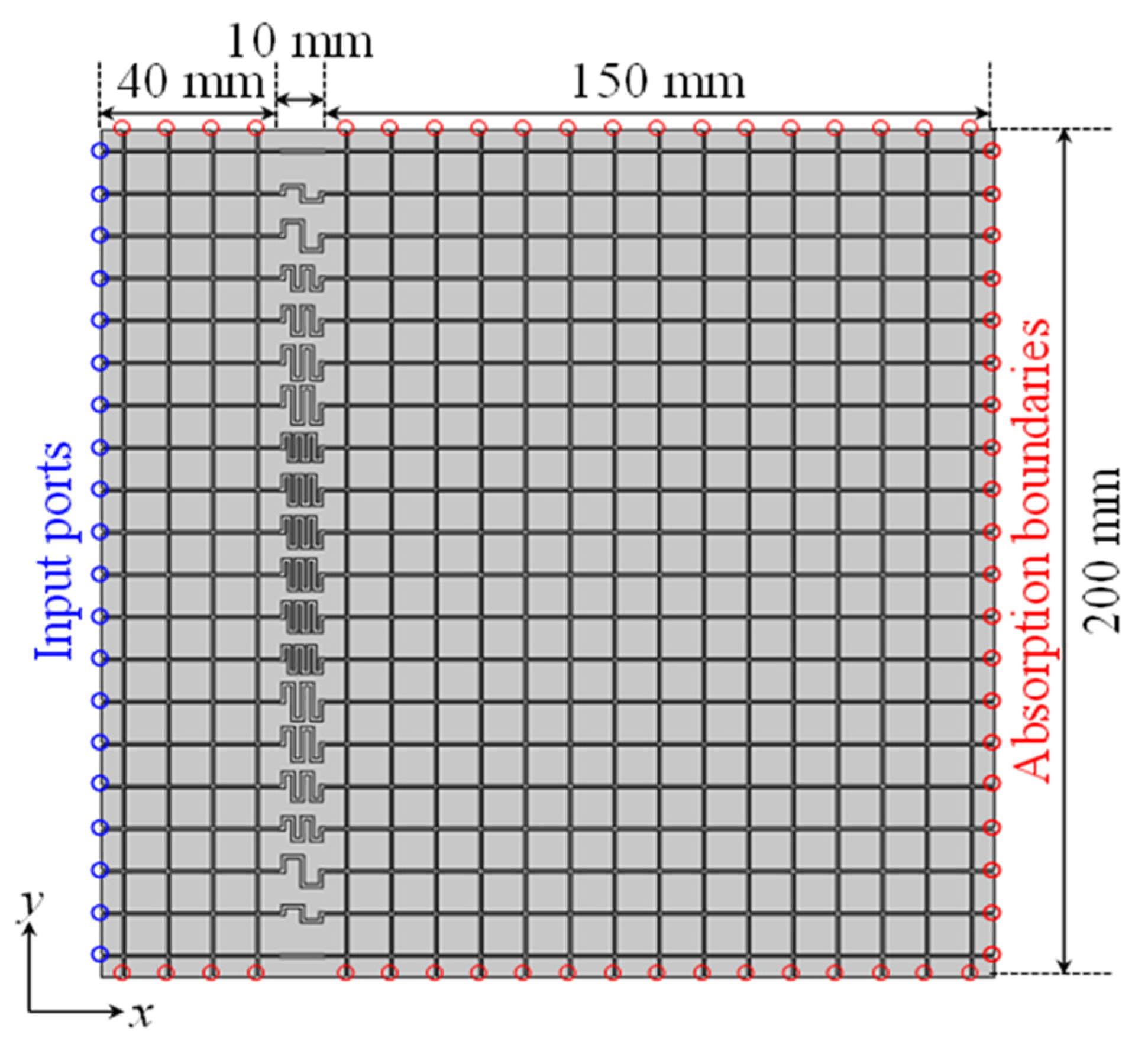
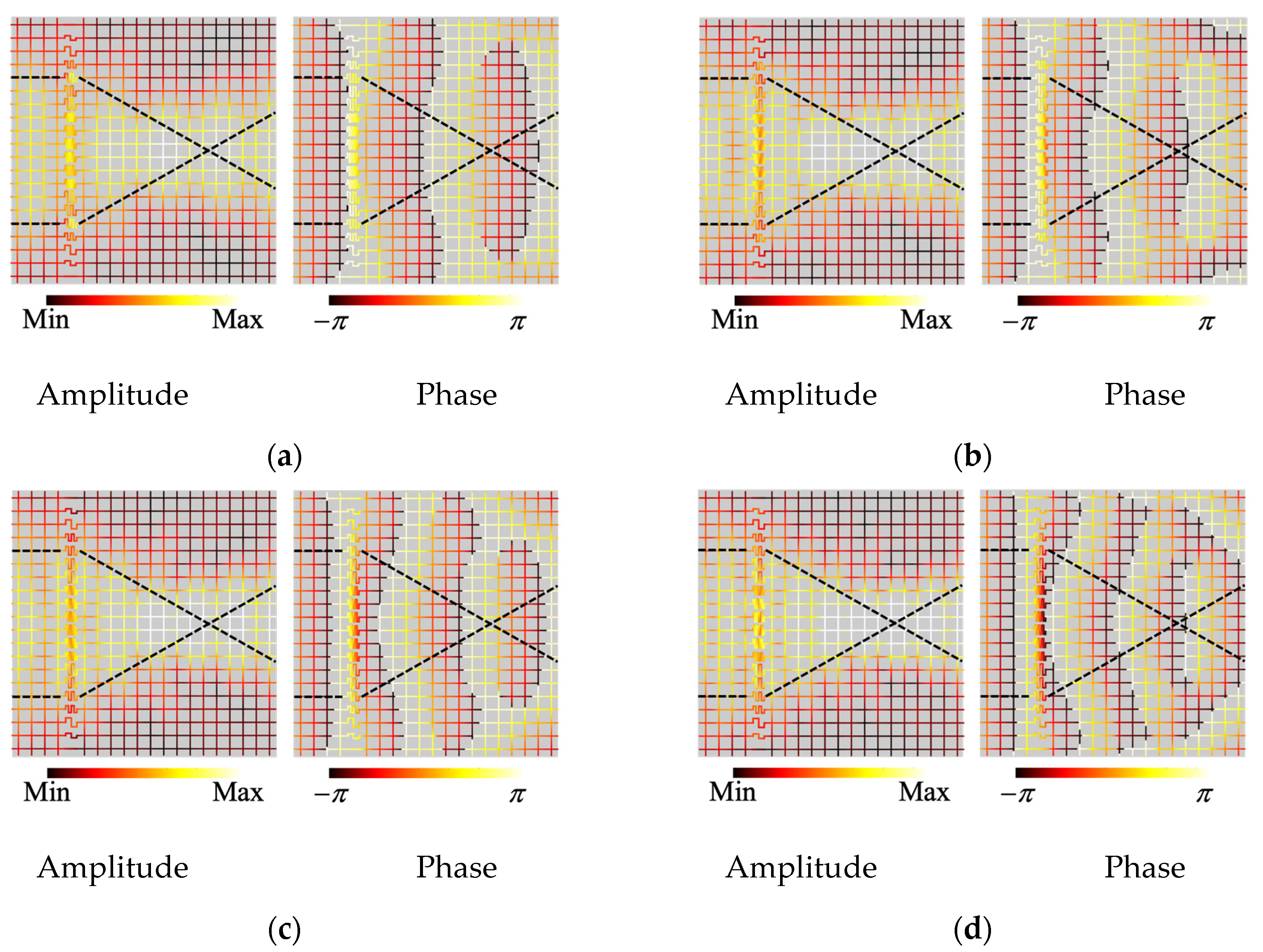

Publisher’s Note: MDPI stays neutral with regard to jurisdictional claims in published maps and institutional affiliations. |
© 2022 by the authors. Licensee MDPI, Basel, Switzerland. This article is an open access article distributed under the terms and conditions of the Creative Commons Attribution (CC BY) license (https://creativecommons.org/licenses/by/4.0/).
Share and Cite
Nakagawa, T.; Nagayama, T.; Fukushima, S.; Watanabe, T. Constitution Method for Broadband Acoustic Metamaterials Based on the Design Theory of a One-Dimensional Distributed Transmission-Line Model. Crystals 2022, 12, 1528. https://doi.org/10.3390/cryst12111528
Nakagawa T, Nagayama T, Fukushima S, Watanabe T. Constitution Method for Broadband Acoustic Metamaterials Based on the Design Theory of a One-Dimensional Distributed Transmission-Line Model. Crystals. 2022; 12(11):1528. https://doi.org/10.3390/cryst12111528
Chicago/Turabian StyleNakagawa, Tomoya, Tsutomu Nagayama, Seiji Fukushima, and Toshio Watanabe. 2022. "Constitution Method for Broadband Acoustic Metamaterials Based on the Design Theory of a One-Dimensional Distributed Transmission-Line Model" Crystals 12, no. 11: 1528. https://doi.org/10.3390/cryst12111528
APA StyleNakagawa, T., Nagayama, T., Fukushima, S., & Watanabe, T. (2022). Constitution Method for Broadband Acoustic Metamaterials Based on the Design Theory of a One-Dimensional Distributed Transmission-Line Model. Crystals, 12(11), 1528. https://doi.org/10.3390/cryst12111528





